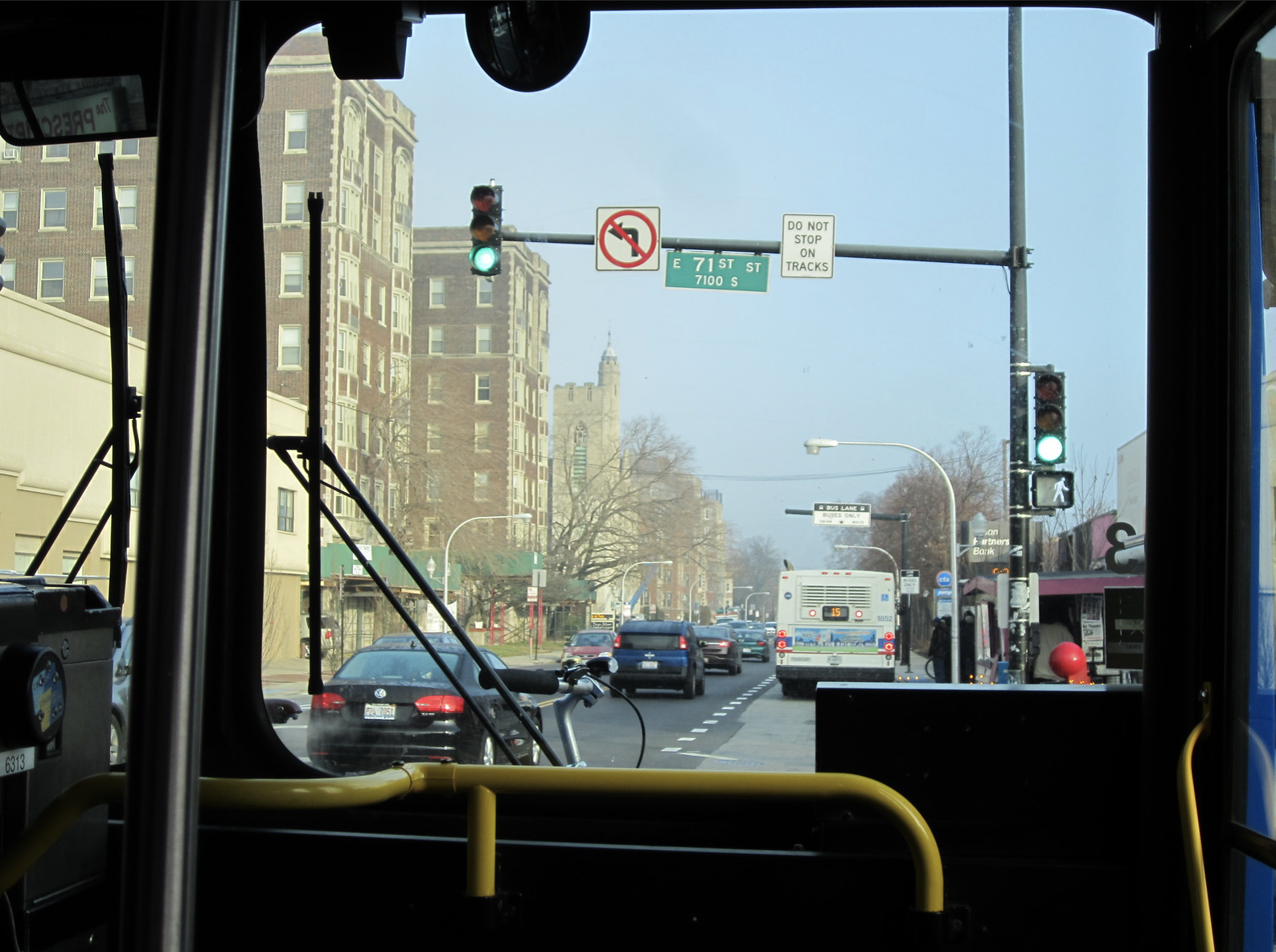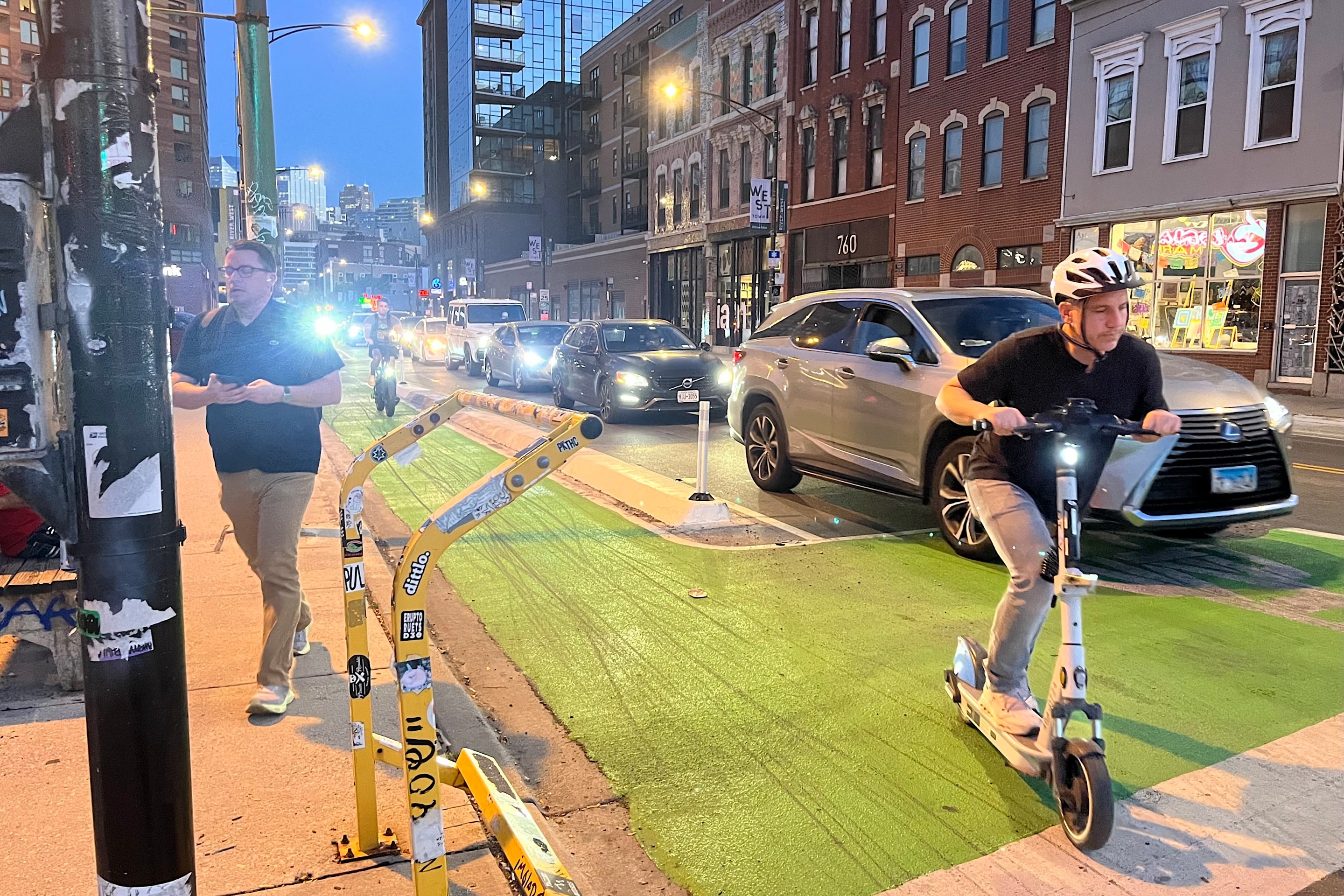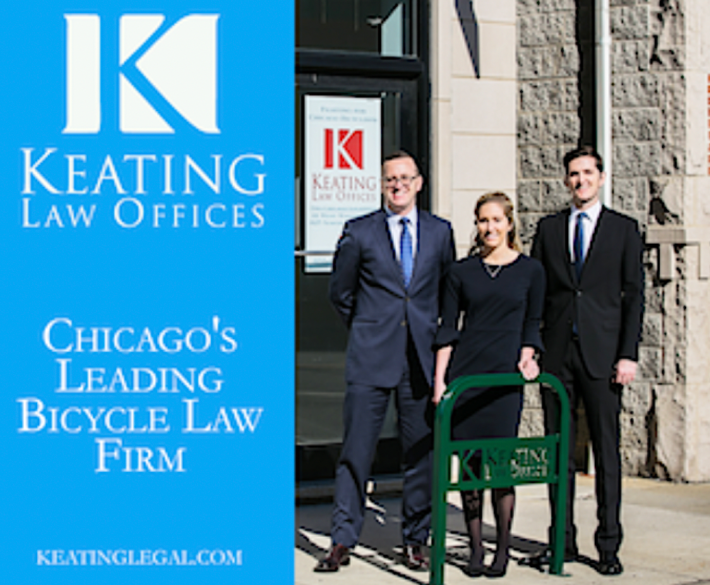
The Active Transportation Alliance recently hosted one of its monthly Advocacy Connect online lunchtime talks. This time the focus was on the CTA's Frequent Bus Network plan, several State transit- and biking-related bills, and the campaign for a 25 mph speed limit.
After an introduction by ATA Advocacy Director Jim Merrell, guest speaker CTA Director of Service Planning and Traffic Engineering Jon Czerwinski discussed the new "Frequent Network" for buses project. This Sunday, March 23, the agency plans to launch eight "Frequent Routes" with no more than a ten-minutes wait between runs.
The upgrades will take place Monday to Friday from 6 a.m to 9 p.m., and on weekends between 9 a.m. and 9 p.m. The improvements will mostly happen midday and in the evenings and weekends.
Here are the initial eight lines to get this treatment, located on the South and West sides.
- J14 Jeffery Jump
- #34 South Michigan
- #47 47th Street
- #54 Cicero
- #60 Blue Island/26th
- #63 63rd Street
- #79 79th Street
- #95 95th Street
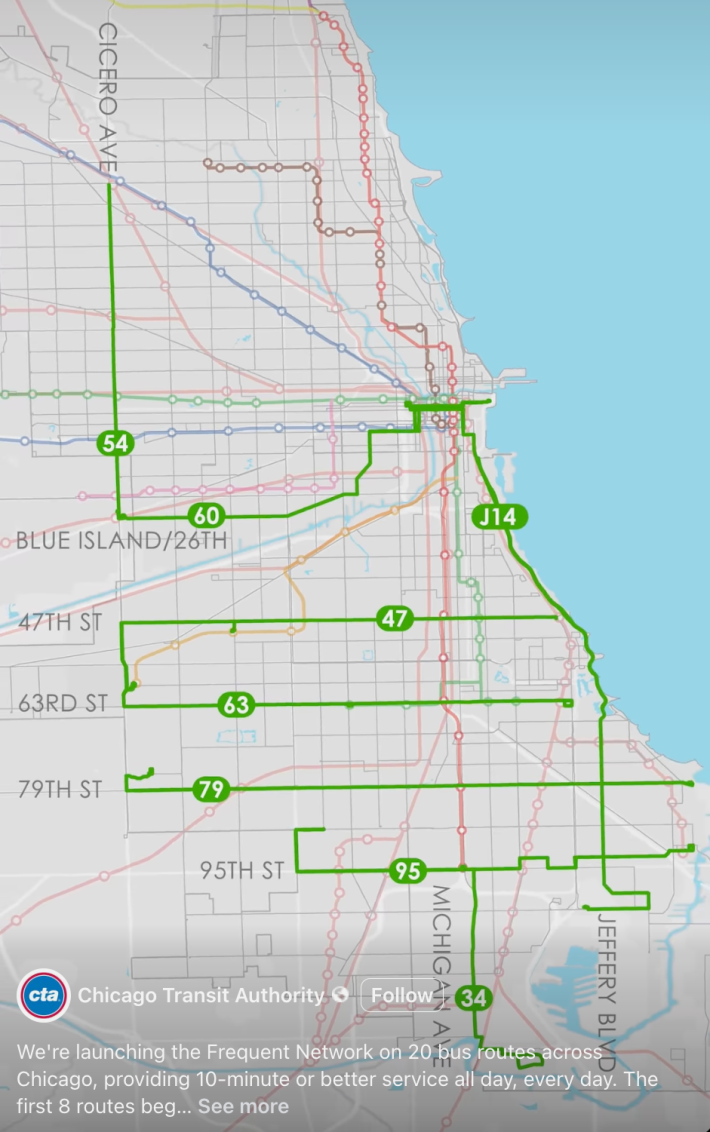
The first eight lines slated for more frequent runs, starting this Sunday. Image: Screenshot of a CTA video on the initiative
Eventually a total of 20 Frequent Routes will be added this year, on a quarterly basis. See Streetsblog's previous coverage for more details on the other lines that will be involved, and the upcoming implementation schedule.
The network was determined in part by CTA’s 2023 Bus Vision Study framing report, which analyzed bus service and helped identify where improvements could be made.
"A lot of these [routes] are going to see a 25 percent or more increase in service," said Czerwinski. "And it's not just how frequently the bus is running, but where the service is going to be. A lot of our routes, we kind of target the heaviest ridership portion of the route. Some of that will go away with this network, where more trips will run end to end. We'll maintain that 10 minutes on the entire route. And part of the way we'll go about that is extending some of those shorter trips so they cover the entire route. So simpler schedules will be an outcome of this as well."

Want to help ensure Streetsblog Chicago can keep publishing articles like this for another year? Please consider making a tax-deductible gift here. Thanks!
Next, Merrell talked about several sustainable transportation-related bills ATA is currently advocating for in Springfield. Here's a quick list:
Transit
• Clean & Equitable Transportation Act (HB3778 and SB2486)
• Metropolitan Mobility Authority Act (HB1833 and SB0005)
• Increase Transportation Choices by Aligning Projects and Funding with Urgent GHG Reduction Goals (HB2629 and SB1680)
25 mph speed limit in urban areas
• Set a Lower Speed Limit to Save Lives (HB2934 and SB2070)
Bike safety
• Recognizing Bicyclists as Permitted & Intended Users of Roads (HB2454)
• Educate Drivers About Sharing the Road with Bicyclists and Pedestrians (HB2983)
• Improve Cyclist Safety by Allowing the Safety [Idaho] Stop (HB1875 and SB2111)
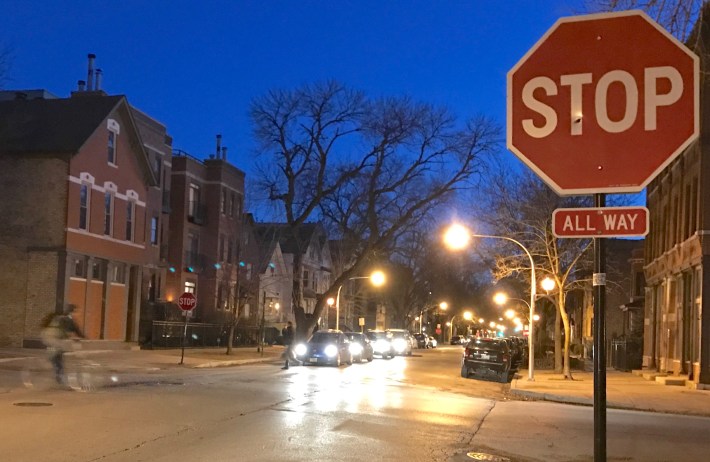
Promoting bike use
• Create an Electric Bike Rebate Program (SB1521)
• Create a Transit to Trails Program (SB1791)
• Expand Bicycle Definition to Help Seniors & People with Disabilities Maintain Mobility (HB3225 and SB2285).
Learn more about these bills, and how to support them, on the ATA website.
"[The reason] there are so many good things happening in the State House right now, it's because folks like all of you have been vocal over the years," Merrell said, answering an attendee's question. "More and more people who care about the same things we care about have been elected to office. We have a lot more champions than we ever have before. People who see this as an important part of their role as State Representatives are fighting for safer streets."
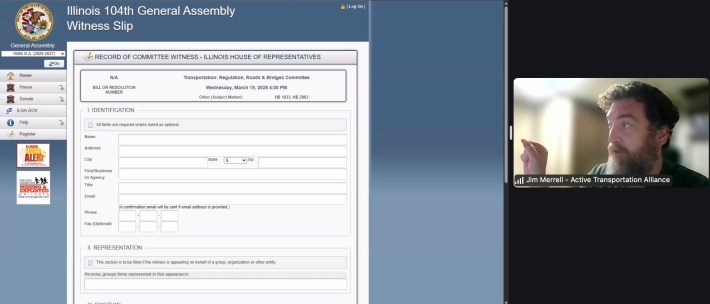
Towards the end of the session, Merrell talked about the ordinance to lower Chicago default speed limit to 25 mph. It was proposed by Ald. Daniel La Spata (1st) and passed in committee, but shot down during the full City Council vote last month.
Merrell blamed the defeat on a contentious budget season, which put a spotlight on one of the main arguments opponents made against the change. "There's concern that lowering the speed limit is a money grab from the City of Chicago," he noted. "Sadly, both [former mayor Lori] Lightfoot and Mayor [Brandon] Johnson have given people every reason to believe that's the case by changes they've made to the speed camera program during the budget process to increase revenue, which really undermines our safety message."
Mayor Johnson recently acknowledge that he was having the Chicago Department of Transportation install 50 new speed cams in an effort to fill a budget gap. As Streetsblog's John Greenfield wrote earlier this month, Chicago's automated enforcement program has been have been proven to prevent hundreds of serious and fatal crashes. However, he noted, the cameras shouldn't be intentionally used as a cash cow.
"As advocates for safe streets, it's always really frustrating to see cameras being discussed in the context of revenue and not in the context of saving lives," Merrell said during the webinare. "Unfortunately, [safe streets advocates have] been kind of put in that position again, where the speed limit change now is brushing up against this separate but related conversation around revenue and automated enforcement."
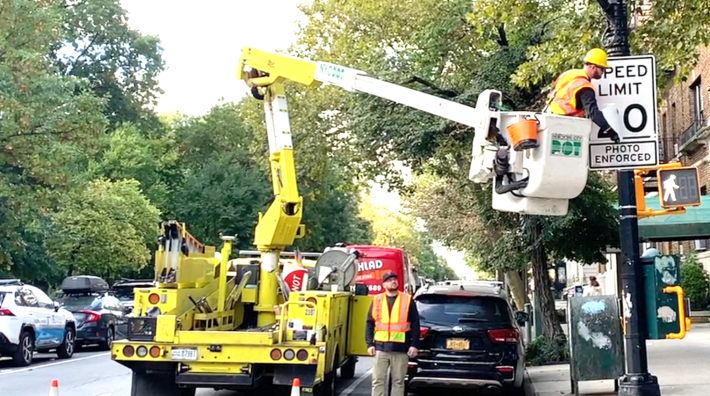
According to Merrell, the second biggest concern about lowering the speed limit is concerns about police conducting more pretextual stops of Black and Latino motorists, using speeding as an excuse to search contraband. According to Ald. La Spata, peer cities like New York and Boston experienced traffic safety benefits from lowering their speed limits to 25, without increased enforcement.
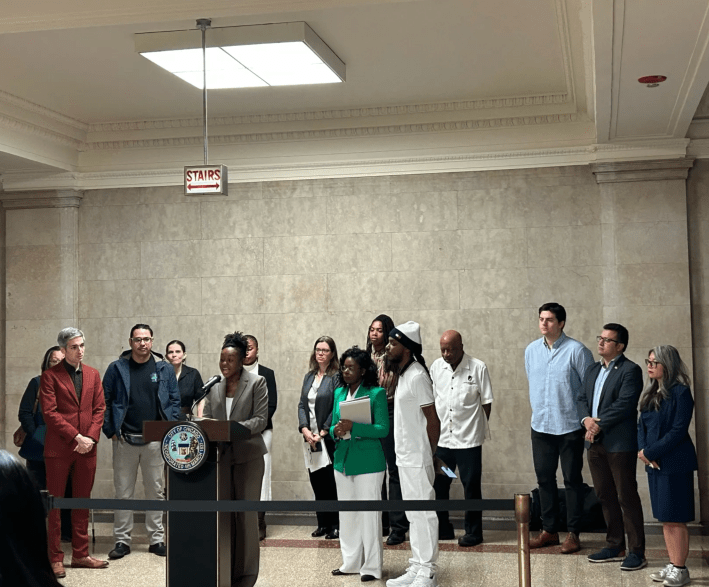
However, that concern was anticipated by ordinance proponents, which is why the sponsors introduced companion legislation to help ensure that traffic enforcement is equitable. ATA is also part of a coalition called Free 2 Move, working to address on stop-and-frisk concerns. Merrell added that while people should stay tuned for more updates on Chicago's 25 mph effort, the speed limit conversation has recently shifted from the City to the State level.

Did you appreciate this post? Streetsblog Chicago is currently fundraising to help cover our 2025-26 budget. If you appreciate our reporting and advocacy on local sustainable transportation issues, please consider making a tax-deductible donation here. Thank you!
